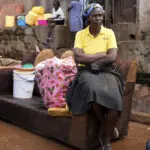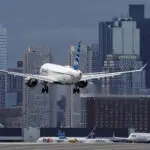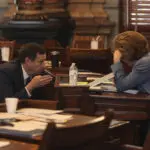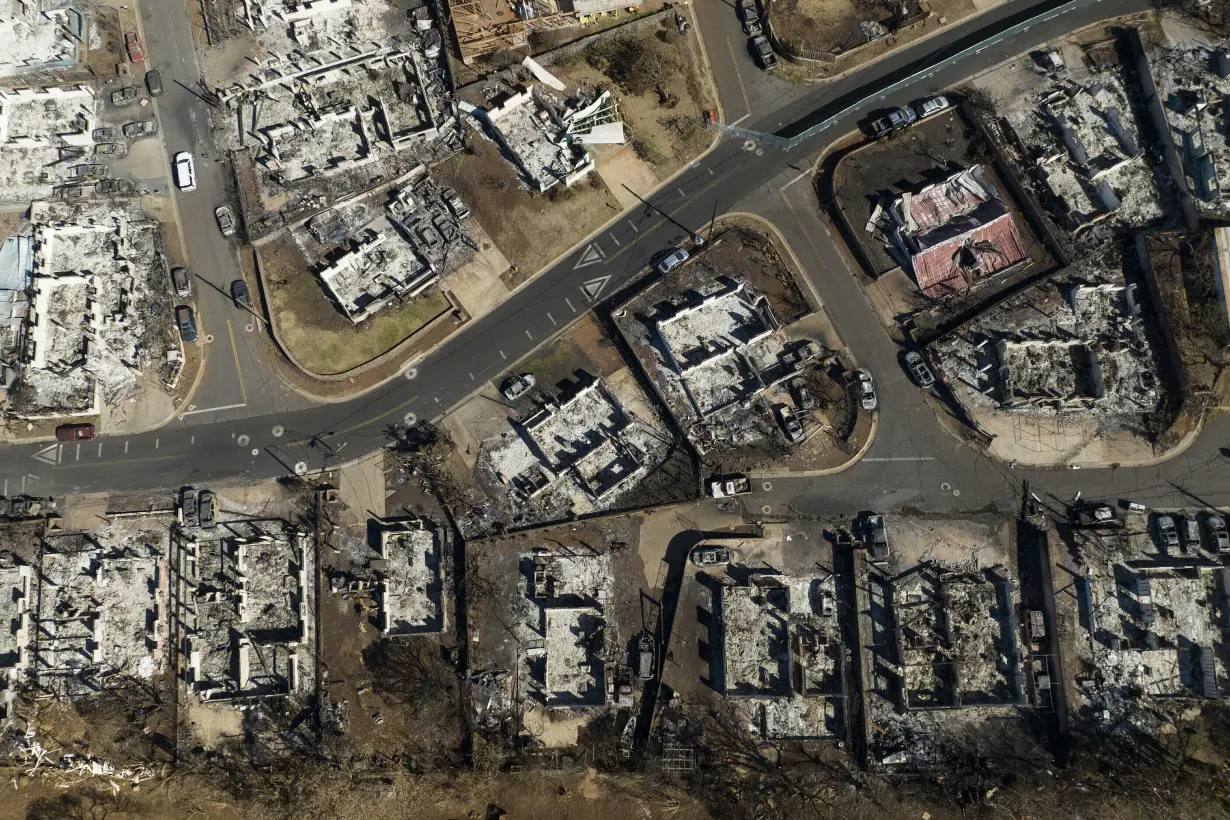HONOLULU (AP) — More than half a year after the deadliest U.S. wildfire in more than a century burned through a historic Maui town, officials are still trying to determine exactly what went wrong and how to prevent similar catastrophes in the future. But two reports released this week are filling in some of the blanks.
The most recent is a detailed timeline of the fire that tore through the heart of Lahaina on Aug. 8, 2023, killing 101 people. Released Wednesday by Hawaii Attorney General Anne Lopez, it is the first phase of a three-part comprehensive investigation being conducted by the Fire Safety Research Institute, or FSRI, with more coming in the next several months.
The previous day, the Maui Fire Department put out an after-action report produced by the Western Fire Chiefs Association. It detailed the challenges the department faced, as well as more than 100 recommendations for improvements.
Here are the key takeaways from the reports:
A major windstorm was toppling power lines and utility poles throughout Lahaina, and the first fire of the day sparked when a live power line snapped and hit dry brush. But firefighters and police received mixed messages about whether Hawaiian Electric had de-energized the lines, according to the FSRI report.
In the early afternoon — before the initial fire flared back up and began overtaking the town — a utility worker told fire crews that he could not confirm if the lines were de-energized. It wasn't until after homes began catching fire that dispatchers reached Hawaiian Electric and got confirmation that the power was out.
The report also described a communications breakdown between police, firefighters and other emergency officials. Cellular networks were down, and the police and fire agencies used separate channels that public officials and others couldn't listen to. Overwhelmed dispatchers had single operators trying to monitor as many as five or six channels at once.
Residents and tourists had no way to get emergency alerts or communicate with loved ones, and 911 operators were inundated with calls. One of the operators was off-island and wasn't getting geographical location information with calls, and thus didn't know where to send people fleeing the flames.
Meanwhile the head of the Maui Emergency Management Agency, Herman Andaya, was off-island at a work conference and getting regular text messages and calls from staffers about the rapidly changing fires. After a series of evacuations in Lahaina, he asked his assistant if he should come home but was told that “it may look OK,” according to the report. A few hours later, after much of the town had burned, Andaya said he would come home the following morning.
An after-action report from police earlier this year also identified communication challenges and recommended that a high-ranking officer be placed in the island's communication center during future emergencies.
Firefighters thought they had extinguished the morning blaze, which started near a part of town that is far from the ocean. But less than 40 minutes after they left the scene, the flames reerupted, quickly spreading from home to home in a nearby neighborhood.
Wind gusts that were still toppling power lines pushed embers and burning debris farther into Lahaina.
As firefighters and other emergency crews scrambled to evacuate houses and get people to safety, dark smoke dropped visibility to near-zero at times. Those roads that weren't blocked by trees, utility poles or power lines became jammed with traffic that sometimes ground to a standstill.
But the time people had to escape would likely have been tight even if the roads were all clear: Within 90 minutes, spot fires were burning all the way to the ocean, according to the FSRI report, and spreading north and south.
Some people died in their cars. Others leaped into the ocean to escape the flames. Still others abandoned vehicles and fled on foot.
Firefighters risked their lives again and again — packing survivors into fire trucks to get them to safety, physically carrying victims away from danger, and taking shelter behind their own disabled vehicles — according to Tuesday's report.
Many of the department's crews and engines were already deployed to fight other wildfires on a different part of the island when Lahaina began to burn. The back-up fire engines used in emergencies weren't fully stocked with equipment, and valuable minutes were lost restocking them before they could be put into action.
The report also highlighted a lack of mutual aid agreements between Hawaii counties, which meant that there was no standard way to request help from neighboring islands. The agencies also lacked a plan for evacuating tourists and residents who did not speak English — and language barriers made it difficult for the firefighters to warn some people of the need to flee.
FSRI investigators are still trying to get some records from the Maui Emergency Management Agency. Research program manager Derek Alkonis said Wednesday that they requested incident activity logs and other records from MEMA on multiple occasions but still had not received all the data.
Alkonis did not go into detail about what he called “a difficulty with gaining information” from the agency, but said the reason is “going to be analyzed in subsequent reports.”
The federal Bureau of Alcohol, Tobacco, Firearms and Explosives is working on a report about the origin and cause of the fire on behalf of the Maui Fire Department. That report is not yet complete but is expected to be released in the next few months.
___
Boone reported from Boise, Idaho; Keller from Albuquerque, New Mexico; and Lauer from Philadelphia. Christopher Weber in Los Angeles, Audrey McAvoy in Honolulu, Claire Rush in Portland, Oregon, Hallie Golden in Seattle, Anita Snow in Phoenix and Mark Thiessen in Anchorage, Alaska, contributed.































